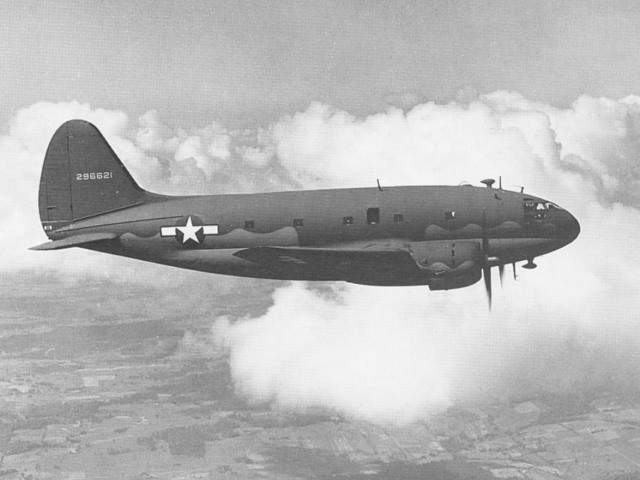CHAOTUNG
by Flight Officer Kenneth L. Porter |
|
Memories come and go with me. Some memories are vivid, some are vague.
There are those I wish would go away altogether and there are some that
seem to remain in the forefront of my remembrances. This one begins on the morning of January 24th.,1945. It was my eighth flight of a total of ninety-four round trip flights over the Hump piloting C-46's. We were scheduled to fly from Mohanbari to Kunming. It was a beautiful morning and we were experiencing nearly perfect weather. The air was dry and crisp. You could see forever. The spotless white clouds were clinging snugly around the sharp peaks of the mountains below us. The jagged edges of the labyrinth of ravines and outcroppings down the mountain slopes seemed sharper than usual all the way down to the tree line. I thought I might be able to count each tree. The sun's rays sparkled and danced off the wings of our faultless aircraft. The Pratt & Whitney engines droned serenely through the morning air.  As if to remind us there was a war going on, about one hour out of Kunming the tower broke radio silence to ask if my cargo was aviation gas. My answer was affirmative. His next question was, "How is your supply of gas"" I replied that our supply was ample. With that his voice boomed warmly through my earphones, "How would you like to volunteer to deliver your cargo up to Chaotung?" We checked the location of Chaotung on our flight maps. It was 220 miles north by northeast of Kunming. The tower had told us there were no radio facilities and no airstrip there, just a nice large field. I replied to Kunming that I was willing to try it. The perfect flying weather and a break in routine put our morale right up top. We changed course and our big C-46 Commando dutifully charged onward. A lot of pilots groaned and called the C-46 awkward and clumsy and hard to maneuver. I loved flying them. You just had to know how to handle them. |
|
The field was close to the wall on the south side of the village. We dragged the field a couple of times. It, too, was very square. We checked out the high and low spots. It wasn't exactly level but we had landed on worse. At one end of the field we spotted the weapons carrier that we had been told about by Kunming tower. Two Air Force personnel stood beside the truck waiting for us to land. I have often wondered where they came from. Where was their home base? Had two guys driven that weapons carrier alone 200 miles or more through the primitive, harsh terrain to establish an airstrip? How long had they been there? How long did they stay there after we left? We made a good landing. The two Air Force guys, the co-pilot, radio operator and myself unloaded our cargo of 50-gallon drums of aviation gasoline onto a high corner of the field under a clump of trees. Usually there were local inhabitants from towns close by who helped us unload our planes. I don't recall seeing a single inhabitant of the village at any time. The thought adds to the strange feeling I've always had about the village. There had never been a plane land there before. It is even possible they had never seen an airplane. Most of the time the Chinese were very helpful and were hard workers. They expressed appreciation for our being there. Where were the Chaotung people? Were they so backward and reserved? Were they afraid of us? Maybe being so remote from any other villages, they didn't understand why we were there. I don't know. My thoughts turn to many possibilities. My imagination sees them all peering, unseen, through cracks in their protective stone wall, cautiously hiding whatever their thoughts were. The Air Force guys told us there was to be an airstrip built there to install a B-25 base to blast Jap positions east of Chaotung. By the time we rolled out the last drum of gas it was lunch time. We were escorted to a rectangular-shaped, gray, drab, two-story stone building situated outside the south wall of the village a short distance.  It was an orphanage operated by two Roman Catholic nuns who were Americans. The inside of the building had a dirt floor. Scattered around were wooden tables and benches. Also scattered around were about fifteen very quiet, even passive Chinese baby girls. They were all under three years old, some being babes in arms. We were told that because this country was arid and high at an elevation of 6,600 ft., it was cold, desolate and barren and had little economy. Village families abandoned their baby girls because their marriage dowries would cost the family a dowry of a cow or pig which they could not afford. Boys not only produced a dowry but they could work harder. The little girls played together and alone. They slept or lay still in their beds. None ever cried. The two nuns were preparing for us a lunch of a wide-leaf green vegetable. It was cooked in a shallow round metal pan over a charcoal fire. The vegetable reminded me of swamp cabbage but it turned out to be absolutely delicious. During our lunchtime conversation, it was plain that it was beyond our hosts' comprehension that we had flown over the Himalayan mountains from Upper Assam to Chaotung. They related to us that they had been held prisoners along with a priest and others by the Japanese some distance east of Chaotung. The priest and the others were shot to death. They were released and told to go and to keep going. The nuns did not know why they were not shot along with the others. They had walked many days and many miles before coming to Chaotung. I remember one of the nuns saying she was from Boston and one said her name was Smith. One was friendly and talkative and the other was very quiet. |
|
There was no way they would listen to my idea. They were both convinced that they had been guided to Chaotung and regardless of the outcome, it was their calling and God's will that they stay and do exactly what they were doing. They were needed to be there to accept and care for the baby girls that would be coming in the future. We cranked up our big empty C-46 about two o'clock in the afternoon. Leaving behind the two American nuns, the Chinese baby girls and the two Air Force men with their weapons carrier, we departed Chaotung and headed back to Mohanbari in Upper Assam. I was told later that the B-25 bomber base at Chaotung never materialized. To my knowledge, our C-46 which carried me and my crew was the only airplane ever to land at that remote little village. My flight log tells me that we flew two trips to Chaotung, one on Jan. 24th. and one on Jan. 27th.,1945. My memory has blended the two trips into one scenario. I do remember distinctly that the thoughts of those people we left behind left me with an uneasy feeling for a very long time. I wondered if this Protestant with a big pair of wings was trying to assist a Catholic mission or was I attempting to buck the system. I also wondered whether I would have been commended or court-martialed had I succeeded in my efforts to take them back with me. As I have written, this episode in my life has remained prevalent in my memory. If anyone has knowledge of this operation, I'd be happy to hear from them as to what happened to the orphanage, the nuns, the two Air Force men and the B-25 base. [Note- research about Chaotung done Sept. 2006 ] By 1947, Catholic Christian missionaries were beginning to build churches, out-patient clinics, hospitals and leprosaria there and in other communities in the region. By 1949, Chaotung was under siege for three days by Chinese communists, after which they retired with any booty they had collected. They left behind their wounded at the hospital where they were guarded as prisoners of the Nationalist Chinese. These unlucky people would then be captured and eventually killed. Things got worse. In 1950, due to extreme inflation and cutoff of foreign supplies, the Chaotung leprosarium had no more medicines and was compelled to make use of the same gauzes and bandages because no new ones were available. With the help of reliable Christians, priests administered to patients the Eucharist, its sacred species having been hidden in small boxes of matches. With the Communist overthrow of the Nationalist government, decrees were issued for the expulsion of all foreigners. By March of 1952, the foreign missionaries and lay workers were expelled from China and their 'corporal works of mercy' were left to die on the vine. |
|
|
|
|
||
| previous page |
|
|
|
|
||